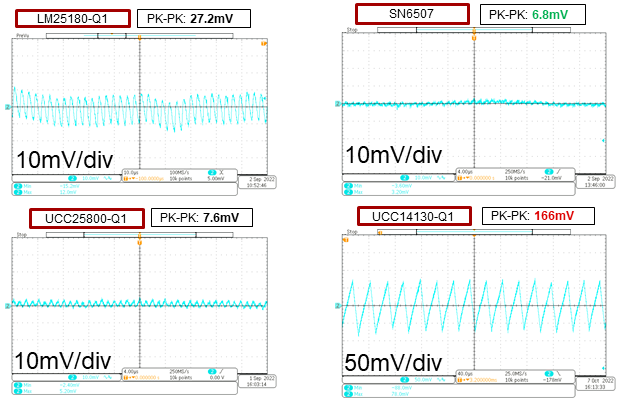TIDT382 February 2024
- 1
- Description
- Features
- Applications
- 1Test Prerequisites
- 2Testing and Results
- 3Waveforms
- 4Summary
- 5References
3.2.5 Output Voltage Ripple Comparison
The output voltage ripple comparison waveforms are shown in the following figure.

The isolated DCDC module uses an
ON-OFF control scheme that results in larger input ripple and output
ripple.
Figure 3-8 Output Voltage Ripple
Comparison